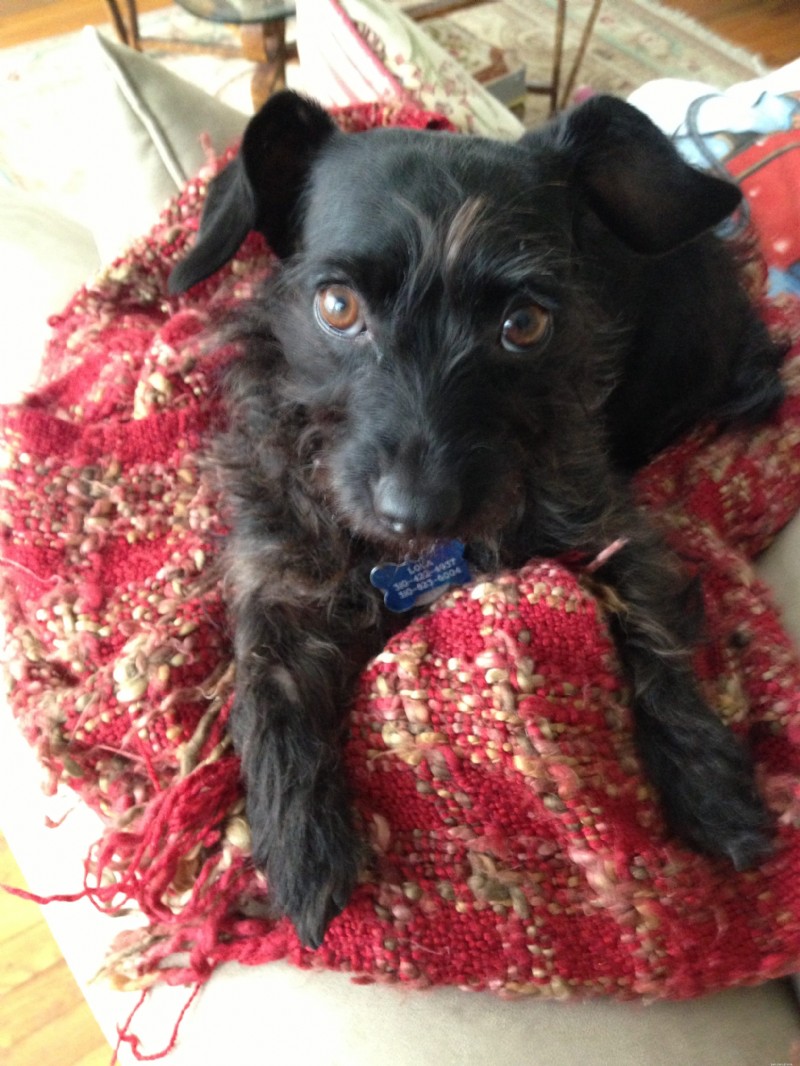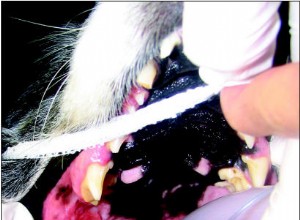ペットの親の心を落胆させる言葉が 1 つあるとすれば、それは「がん」です。残念ながら、私たちのペットは、私たちが望んでいるほど、この恐ろしい病気から免れていません。人間と同じように、ペットもさまざまな種類のがんを発症する可能性があり、そのうちの 1 つが扁平上皮がん (SCC) です。読み続けて、ペットの SCC とそれを防ぐために何ができるかについて学びましょう。
扁平上皮細胞は、皮膚と内臓の外層を覆う上皮を構成する薄くて平らな不規則な形の細胞です。これらの細胞には多くの機能があり、その 1 つは下にある組織を保護することです。紫外線やタバコの煙にさらされるなどの理由で扁平上皮細胞が損傷を受けると、癌化する可能性があります。
犬と猫の両方が扁平上皮癌を発症する可能性がありますが、この癌は犬よりも猫、特に中年から老齢の猫に多く見られます。ペットの扁平上皮がんには、主に口腔がんと皮膚がんの 2 種類があります。
DVM360 によると、口腔扁平上皮がんは猫の口腔がん全体の 10% を占め、犬の口腔がんの中で 2 番目に多いがんです。通常、高齢のペットに影響を及ぼし、生存率が低くなります。扁桃腺や歯肉など口のどこにでも見られますが、口腔 SCC は舌の下に最もよく見られます。急速に成長し、頻繁に顎骨に侵入します。
猫では、毛づくろい中に猫の舌に付着するタバコの煙やノミの首輪の化学物質などの発がん物質が口腔 SCC を引き起こす可能性があります。犬の正確な原因はまだ分かっていません.
口腔扁平上皮がんの徴候には、口臭、摂食困難、よだれ、口内出血や痛みなどがあります。 Other symptoms include loose teeth and ulcerated gums. These signs can often be confused with dental disease, so it is essential for veterinarians to perform a thorough oral exam in older pets. Diagnostic procedures are the same for oral as for skin cancer, which can start with labwork, needle aspirate and/or biopsy with histopathology.
Surgery is the standard of treatment for oral SCC. It can be aggressive, with the removal of a portion of the jawbone, nearby lymph nodes, or both, if necessary. Although surgical tumor removal can provide immense pain relief, the tumor’s size and location can sometimes make surgery difficult or even impractical. Non-surgical treatment options include chemotherapy and radiation therapy.
Treatments that do not target the tumor itself, but can help a pet to feel better, include antibiotics, painkillers, and nutritional supplementation.
Prevention strategies include the following:

“My 8-year-old dachshund-Jack Russell mix was diagnosed with squamous cell cancer of the tonsils,” begins pet parent Elizabeth. “When I brought her to the vet, she had lost weight, had no bark, and seemed to have difficulty eating. The vet found and removed the tumor, but warned me that this is an extremely aggressive form of cancer and that it had most likely already metastasized to her lymph nodes.” Elizabeth was referred to an oncologist, who discovered more lesions in Lola’s lung. They recommended palliative radiation and sadly, gave Lola only 3 months to live.
“I could not just let her die,” says Elizabeth. “So I read all the veterinary and animal literature I could find on what deters cancer cells in animals. The finding that stood out to me was cruciferous vegetables, like broccoli, kale, and Brussel sprouts, have been found to inhibit cancer cells in research on animals.” Elizabeth dived deeper and changed her dog’s diet:“She is a very picky eater, but likes Brussel sprouts, as long as they have butter in them. Also a diet low in carbs, high in protein and with healthy fats was found to be helpful! She has been eating Brussel sprouts with olive oil and a little butter every day, as well as chicken breast. I’d like to get some other fruits and veggies into her, but she won’t eat them.”
While vets and pet parents alike will tell you that cancer is a daunting diagnosis and that it is truly hit-or-miss with alternative solutions, Elizabeth has had success with Lola’s diet. “It is now 3 months post diagnosis. She has regained her weight and her bark, and to all appearances is symptom free, active, and happy. It’s too early to know if she will be a survivor, but I am sharing this in case anyone else’s dog is in a similar position. So far, she is defying the odds. By the way, she may be the cutest and most wonderful dog on this earth— an unbiased opinion.” Lola’s claims have totaled $2,919 and Elizabeth has been reimbursed $2,135 (90% reimbursement rate; $250 deductible). Please note that cancer claims were sandwiched between unrelated claims that may skew the totals.
Skin SCC is the fourth most common feline skin cancer but is rare in dogs. Excessive sun exposure is the most common cause. By far, white and light-colored hair cats are most susceptible to skin SCC and often develop tumor lesions on the temples, eyelids, tip of the nose, and outer tips of the ears. Dogs with sparse hair and lightly pigmented skin and fur (e.g., white Bull Terriers) are also susceptible. Interestingly, in some dogs, skin SCC can target the nailbeds.
Skin SCC typically affects older cats, but both dogs and cats of any breed and age can develop this cancer, depending on their amount of sun exposure and lack of skin pigmentation.
In the early stages, skin SCC doesn’t even look like a tumor. Instead, you might notice a small, solitary skin lesion that looks a little dry, flaky, and ulcerated. Often, these signs can be mistaken for other skin diseases, such as allergies or parasites. As time goes on, the lesion grows, becomes bumpy, develops hard and irregular borders, and causes skin swelling.
Skin SCC rarely spreads beyond its original tumor site, but it can spread to nearby lymph nodes and possibly the lungs. It can also recur in the same spot.
Diagnosing skin SCC is done via a skin biopsy, which will show cancerous squamous cells. Other diagnostic tools include a blood sample, chest x-ray, and lymph node analysis to devise an optimal treatment plan.
Skin SCC is primarily treated with aggressive surgical removal of the lesion and at least a portion of the affected area to ensure removal of all tumor tissue. Other treatments include radiation therapy, cryotherapy (freezing), and chemotherapy.
Squamous cell carcinoma is an aggressive cancer in pets. Pay close attention to your pet’s skin, particularly if you have a white-haired cat, and take your pet to your veterinarian if you notice any strange bumps on the skin or oral problems. The optimal treatment plan will depend on the tumor’s size and disease progression.
If you love your pets like family, you want to protect them like family. By enrolling in pet insurance, you can save up to 90% on vet bills which means saying “yes” to life-saving treatments, no matter the cost. If you’re not a part of our pack, start by getting a free quote.
The content is not intended to be a substitute for professional veterinarian advice, diagnosis, or treatment. Always seek the advice of your veterinarian or other qualified health provider with any questions you may have regarding a medical diagnosis, condition, or treatment options.

十分に早期に発見されれば、腫瘍を治療または除去できるため、犬を定期的にチェックし、異常な成長に注意することが重要です。この記事では、犬の扁平上皮がんを調査します。これにより、自分の犬の症状を認識し、獣医に診てもらう前に選択肢を知ることができます。 この記事では、以下について説明します。 犬の扁平上皮がんとは何ですか? 犬の扁平上皮がんの症状は何ですか? 犬の扁平上皮がんの原因は何ですか? 犬の扁平上皮がんを予防する方法 犬の扁平上皮がんの治療法は何ですか? 犬の扁平上皮がんとは何ですか? 扁平上皮がん(SCC)は、犬の皮膚の表皮層にある皮膚細胞の悪性腫瘍です(1)。表皮は、皮膚を構

いつか、すべての犬の愛好家は、熱心な犬の仲間からの口臭の爆発に耐えてきました。悪臭を放つ息はプーチの間で非常に蔓延しているため、「迷子になって、犬の息を!」のように、まさにそのフレーズは侮辱になりました。 それでも、犬の予防歯科衛生のアイデアについての言及は、ほとんどばかげているとは言わないまでも、奇妙なものとして一部の人々を襲います。 「犬用の歯ブラシ?冗談でしょ!」 しかし、それは冗談ではありません。これらの調査結果を噛み砕いてください:67,000匹の犬と猫を対象とした1995年のミネソタ大学の疫学研究では、口腔疾患が最も一般的な犬と猫の臨床疾患であることが示されました。また、